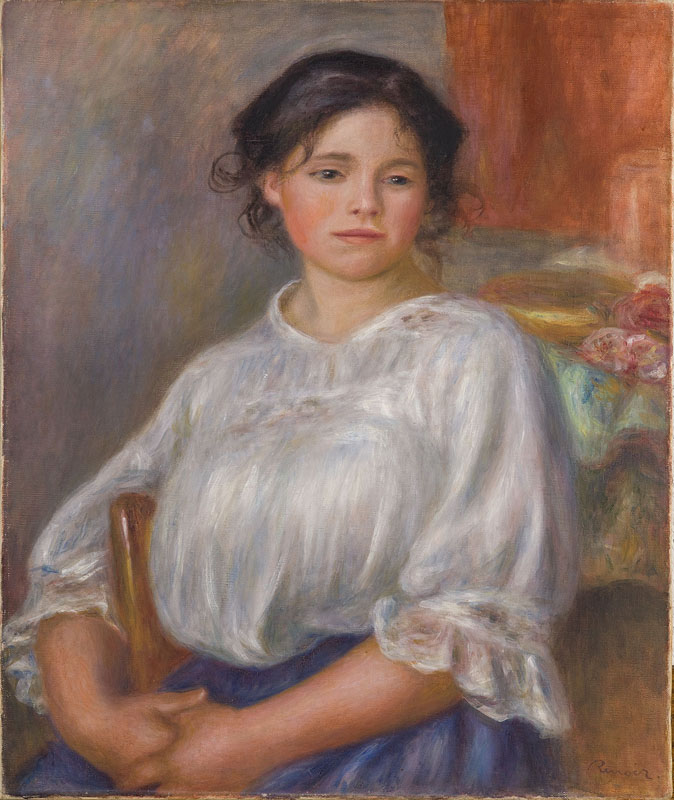Listen to co-curator Sarah Lees discuss a painted portrait and a closely related drawing.

Renoir’s model for this painting and the adjacent sheet was nineteen-year-old Hélène Bellon (1890–1959), the fiancée of the family’s mailman in Cagnes-sur-Mer, outside Nice, where the artist had bought the property of Les Collettes in June 1907. The red and white chalk drawing, larger than the related painting, is a fully resolved work in its own right, likely made after the canvas was completed. In the painting the young woman has more defined features and livelier curls of hair. There is more space to her right, and a table with a cloth, vase, and flowers is visible in the background. The drawing was acquired by the Louvre in April 1915 for the modest sum of 100 francs, perhaps to complement the painting, which had been bequeathed to the museum as part of Count Isaac de Camondo’s bequest in 1911.
Young Woman Seated, 1909
Oil on canvas
The Art Institute of Chicago, bequest of Kate L. Brewster, 1949.514
Musée d'Orsay, dist. GrandPalaisRmn.
This painting and the related red chalk sheet provide an opportunity to make a direct comparison between Renoir’s painting and drawing styles. It is not clear which he made first, since the drawing is more fully developed than a typical preliminary study and may well have been made after the painting was completed. The sitter has been identified as Hélène Bellon, the fiancée of the mailman in Cagnes, the village in the South of France where Renoir had a house. On meeting her in 1908, the artist reportedly asked her immediately to sit for him and she eventually agreed. The painting provides certain anecdotal details like the ornamental lace or embroidery on the young woman’s blouse and a tabletop with a dish and some flowers in the background. In the drawing these details are omitted or softened, and the sitter’s features are even more broadly generalized. The drawing also demonstrates the range of effects Renoir could achieve in red chalk, a medium he had favored since the 1880s. With the soft, easily blended chalk, he represented the semi-sheer quality her light cotton blouse, the rosier tones of her cheeks, and the darker shades of brick red in her hair and the spaces behind her arms and shoulders, highlighting the lightest passages with white and strengthening the shadows with brown pastel and black accents in her eyelashes and pupils. The resulting image gives the sitter the glowing, monumental presence that Renoir often sought in his late work.
